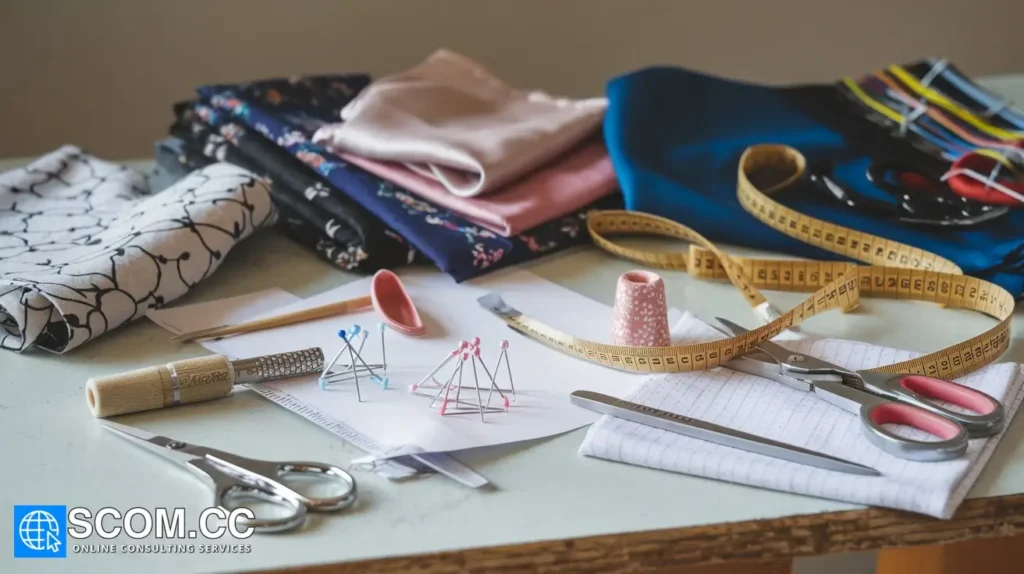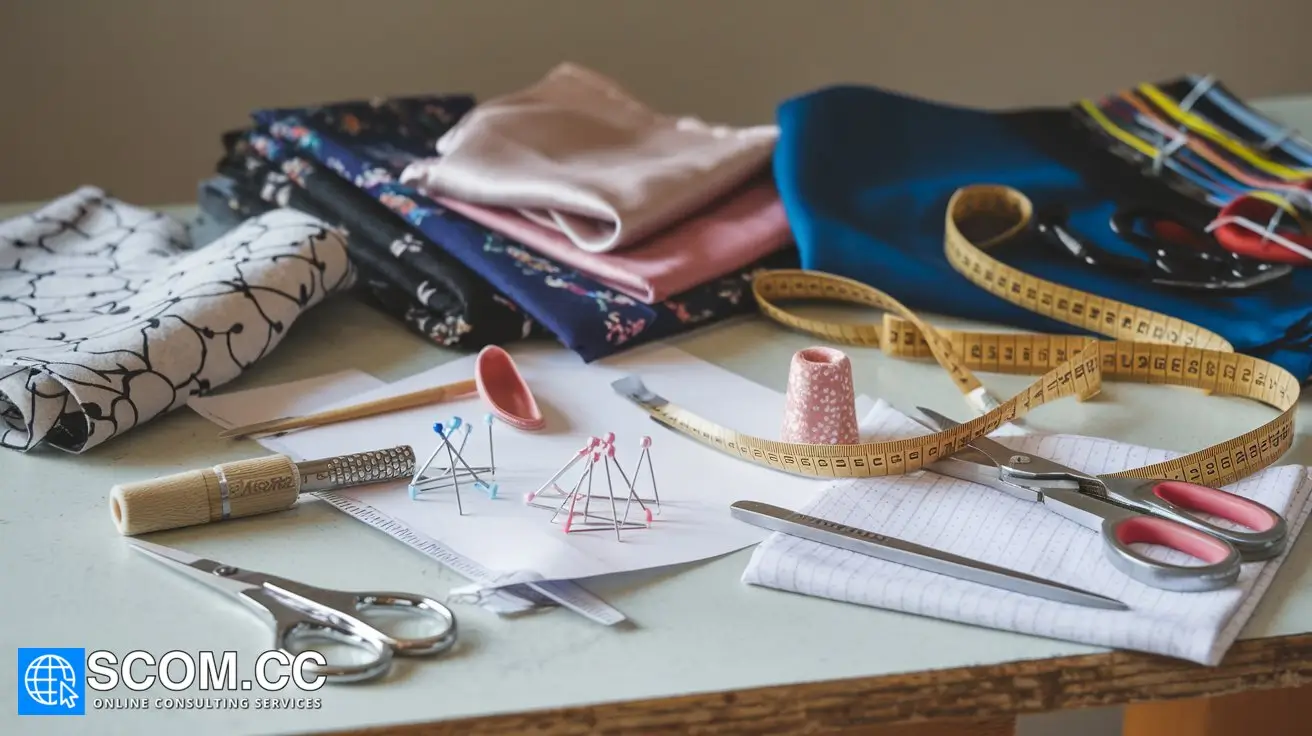A Guide to Measuring and Cutting Tools for Tailors

A Guide to Measuring and Cutting Tools for Tailors
In the art of tailoring, precision is key. The success of any tailoring project hinges on accurate measurements and clean, precise cuts. To achieve these results, tailors rely on a range of specialized tools designed for measuring and cutting. This guide offers a comprehensive overview of the measuring and cutting tools every tailor needs, providing insights into their functions, benefits, and best practices for use.
1. Measuring Tools
1.1 Tape Measure
Tape measures are fundamental to tailoring, providing the flexibility needed to measure various body parts and fabric lengths.
- Features to Look For: A high-quality tape measure should be flexible, with both metric and imperial units for versatility. Look for a tape with clear markings and a retractable feature for convenience.
- Best Practices: Always ensure the tape measure is not twisted or stretched when taking measurements. For body measurements, take them with the tape snug but not tight, and record them in a relaxed posture.
1.2 Measuring Ruler
A measuring ruler is essential for marking and measuring fabric, ensuring straight and precise lines.
- Types: Metal rulers are durable and ideal for cutting straight lines. Transparent plastic rulers allow for easier visibility of fabric markings.
- Best Practices: Use the ruler to draw or mark straight lines on fabric before cutting. For accuracy, keep the ruler firmly in place to prevent slipping.
1.3 French Curve
The French curve is a specialized tool used for drawing smooth, curved lines on patterns and fabric.
- Features: This tool comes in various shapes and sizes, each designed for different types of curves such as armholes or necklines.
- Best Practices: Choose the appropriate curve for the shape you need. Position the French curve carefully to ensure smooth and accurate curves, and use a sharp pencil or chalk for marking.
1.4 Tailor’s Curve
Similar to the French curve, the tailor’s curve helps in drafting patterns with specific body contours.
- Features: It is often used for more specialized curves and contours in garment fitting.
- Best Practices: Use the tailor’s curve for specific adjustments in pattern drafting, particularly for areas requiring a custom fit.
2. Cutting Tools
2.1 Fabric Scissors
Fabric scissors are designed to cut through fabric with precision, reducing the risk of fraying and distortion.
- Features to Look For: High-quality fabric scissors should have sharp, stainless steel blades and comfortable handles. They should be specifically designed for fabric to ensure clean cuts.
- Best Practices: Use fabric scissors exclusively for cutting fabric to maintain their sharpness. Keep them well-oiled and sharpened to prevent snagging.
2.2 Rotary Cutter
A rotary cutter is a versatile tool for cutting through multiple layers of fabric or intricate patterns.
- Features: It uses a circular blade that rolls over the fabric, making it ideal for straight cuts and curves. It works best with a cutting mat.
- Best Practices: Ensure the rotary cutter blade is sharp and clean for precise cutting. Use a cutting mat to protect surfaces and extend the life of the blade.
2.3 Pinking Shears
Pinking shears create a zigzag pattern along fabric edges to prevent fraying.
- Features: The blades have a serrated edge that cuts fabric in a zigzag pattern.
- Best Practices: Use pinking shears on raw fabric edges to prevent fraying. They are not suitable for intricate cutting but are excellent for finishing edges.
2.4 Electric Fabric Cutter
An electric fabric cutter is a more advanced tool for cutting large quantities of fabric or working with heavy materials.
- Features: It features a motorized blade that can cut through multiple layers with ease.
- Best Practices: Use electric fabric cutters for bulk cutting or heavy materials. Ensure the blade is sharp and follow manufacturer instructions for safety and maintenance.
3. Marking Tools
3.1 Tailor’s Chalk
Tailor’s chalk is used for marking fabric and patterns, and it can be easily removed or washed out.
- Features: Available in pencils, blocks, or pens, tailor’s chalk provides clear markings on fabric.
- Best Practices: Use tailor’s chalk to make temporary marks that are easy to remove. Test on a scrap piece of fabric to ensure it does not leave permanent marks.
3.2 Fabric Marking Pens
Fabric marking pens are another option for making precise markings on fabric.
- Features: They come in various colors and are designed to be visible on different fabric types.
- Best Practices: Choose pens with erasable or washable ink to avoid permanent marks. Always test on a small fabric sample first.
4. Additional Tools
4.1 Pattern Weights
Pattern weights are used to hold patterns in place on fabric while cutting.
- Features: They come in various shapes and materials, including metal, plastic, and fabric-covered weights.
- Best Practices: Place pattern weights around the edges of the pattern to prevent shifting. Ensure they are evenly distributed to maintain accuracy.
4.2 Cutting Mat
A cutting mat provides a safe surface for using rotary cutters and helps protect work surfaces.
- Features: It is self-healing, allowing for clean cuts without damaging the mat.
- Best Practices: Keep the cutting mat clean and free of debris. Rotate it periodically to ensure even wear.
Conclusion
Having the right measuring and cutting tools is crucial for any tailor aiming for precision and quality in their work. From tape measures and French curves to fabric scissors and rotary cutters, each tool plays a vital role in ensuring that garments are crafted with accuracy and care. By investing in these essential tools and understanding their proper use, tailors can enhance their craftsmanship and achieve professional results.

To explore more about tailoring, visit our Blog of Tailoring. If you have any questions or need assistance, go to our contact page. Additionally, you can find more information about tailoring and consulting at this tailoring and consulting portal.

Leave a Reply